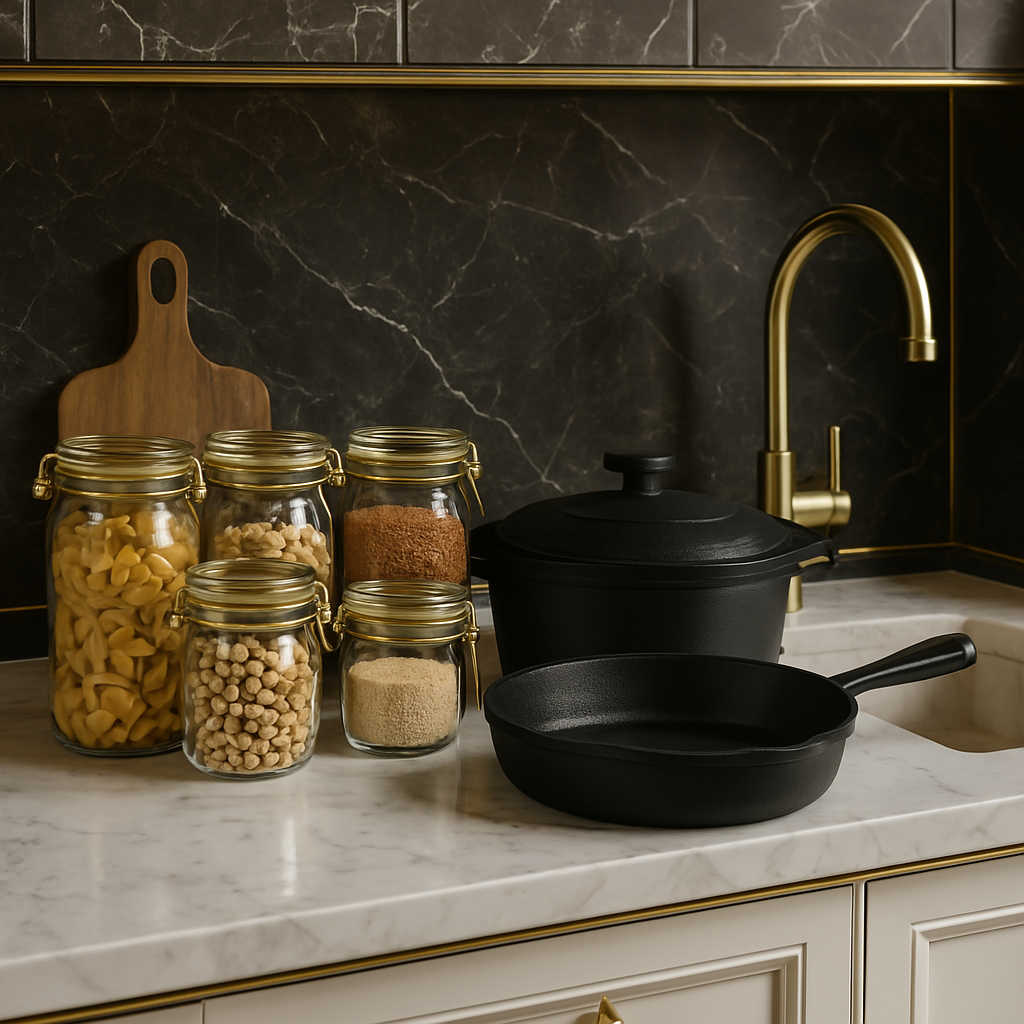
Every day, we use lots of products that contain synthetic chemicals, from cooking pans to furniture. Over time, small daily exposures to these chemicals can add up and affect your health. Some chemicals, like PFAS (per- and polyfluoroalkyl substances) or BPA (bisphenol A), can mess with hormones and are linked to problems like infertility, developmental delays, and even cancer (source).
The good news is you can reduce your exposure by making smarter choices about what you use at home. This guide will show you how to spot common chemicals and find healthier options for your everyday life.
Where Harmful Chemicals Hide
To reduce chemicals in your home, start by knowing their most common sources. Here are two to watch out for:
Non-Stick Cookware (PFAS)
Non-stick pans make cooking and cleaning easier, but they can release chemicals called PFAS into your food, especially if the pan is scratched or overheated. These chemicals are very hard to break down and have been linked to immune problems, thyroid issues, and some cancers (source).
What to do:
If your non-stick pan is scratched, stop using it. Also, make sure your kitchen is well-ventilated when cooking with non-stick cookware.
Plastic Containers and Utensils
Plastic containers might seem safe, but heating food in them can release harmful chemicals like BPA and phthalates into your meals. These chemicals can act like hormones in your body and are linked to infertility and other health problems.
What to do:
Don’t microwave food in plastic containers. Switch to glass or ceramic dishes for heating and storing food.
By tackling these two areas, you’ll already lower the levels of chemicals you’re exposed to.
Healthier Swaps for Your Home
Switching to safer products can feel tricky at first, but small changes add up over time. Here are some simple swaps for a healthier home:
Safer Cookware
1. Replace non-stick pans with options like cast iron, stainless steel, or enamel-coated cookware. Cast iron, when seasoned properly, is naturally non-stick. These materials don’t leak harmful substances into your food and are built to last. High-quality ceramic-coated pans are another option for a non-stick surface without PFAS (ensure the label says PFAS-free/PTFE-free).
2. Opt for silicone or wooden utensils for cooking; they withstand heat without leaching chemicals, unlike cheap plastic spatulas that may melt or shed microplastics.
Better Food Storage
3. Go for glass or food-safe stainless steel containers instead of plastic ones. They’re durable, reusable, and totally free of harmful chemicals.
Extra Tip:
If you still use plastic containers, wait for your food to cool before storing it, and avoid plastics marked #3 (PVC), #6 (Polystyrene), or #7 (which often contains BPA/BPS), as they are more likely to contain harmful chemicals.
Everyday Tips to Reduce Chemicals
Want to do more? Here are some simple and practical ideas to detox your home:
4. Rethink Your Cleaning Products
Many common cleaning supplies release harmful fumes called VOCs (volatile organic compounds) (source). Look for plant-based or fragrance-free cleaners. Or, make your own using basic ingredients like vinegar and baking soda.
5. Choose Better Personal Care Products
Beauty products often contain chemicals like parabens and phthalates, which can mess with hormones. Use products labeled “paraben-free” or “phthalate-free.” Apps like EWG’s Skin Deep can help you find safer products.
6. Freshen Your Air Naturally
Indoor air contains pollutants from things like synthetic fragrances, gas stoves, and even candles. Open your windows often, use exhaust fans, or invest in a HEPA air purifier. Adding houseplants can also improve air quality.
7. Be Mindful of Your Clothes
Some fabrics are treated with flame retardants or harsh dyes. (source) Whenever possible, choose natural materials like organic cotton or wool, and wash new clothes before wearing them to remove chemicals.
8. Filter Your Water
Tap water can carry contaminants like lead, chlorine, and microplastics (source). Use a water filter, like a carbon pitcher or reverse osmosis system, to protect your drinking water.
Pro Tip:
Start small. Focus on one area, like switching your cleaning products or swapping out your cookware, and build on your progress. Every small change helps.
A Healthier Future Starts Now
Non-toxic living doesn’t have to be overwhelming. By making informed choices, you’re protecting your health and creating a safer home for your family. Even small actions, like using a glass food container or switching to plant-based cleaners, make a difference over time.
Remember, it’s not about being perfect. What matters most is taking steps toward a healthier lifestyle. Little by little, you can reduce your exposure to harmful chemicals and build a home that supports your long-term well-being.




